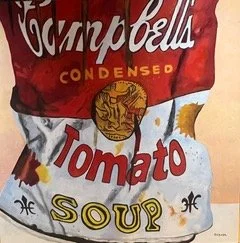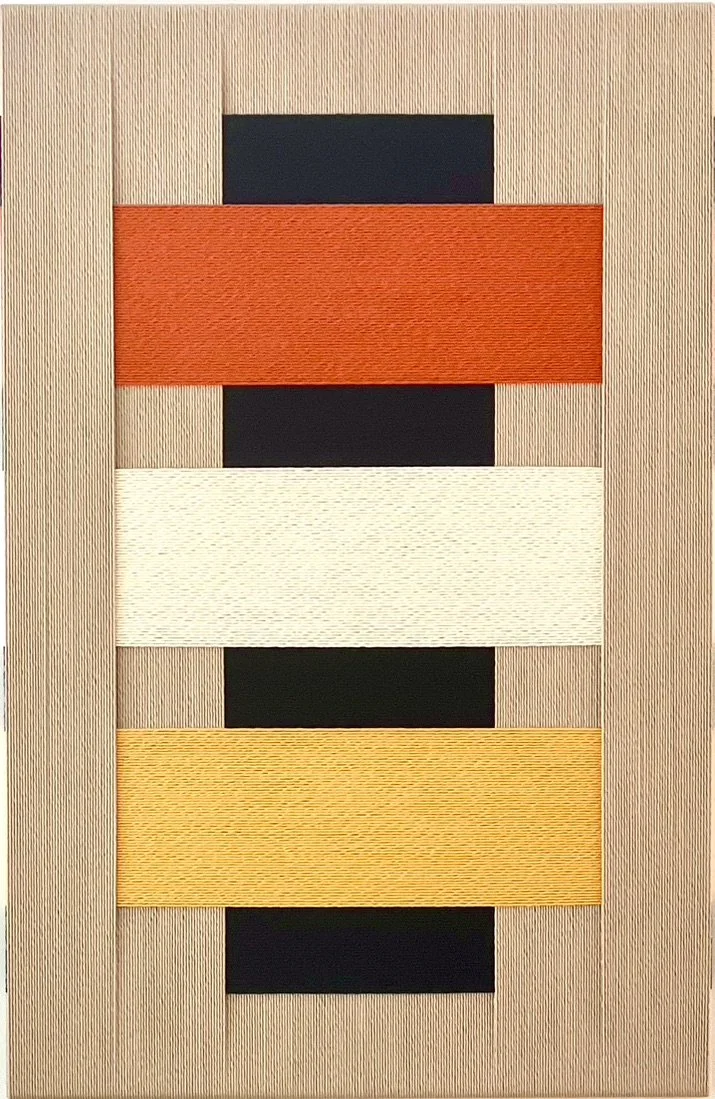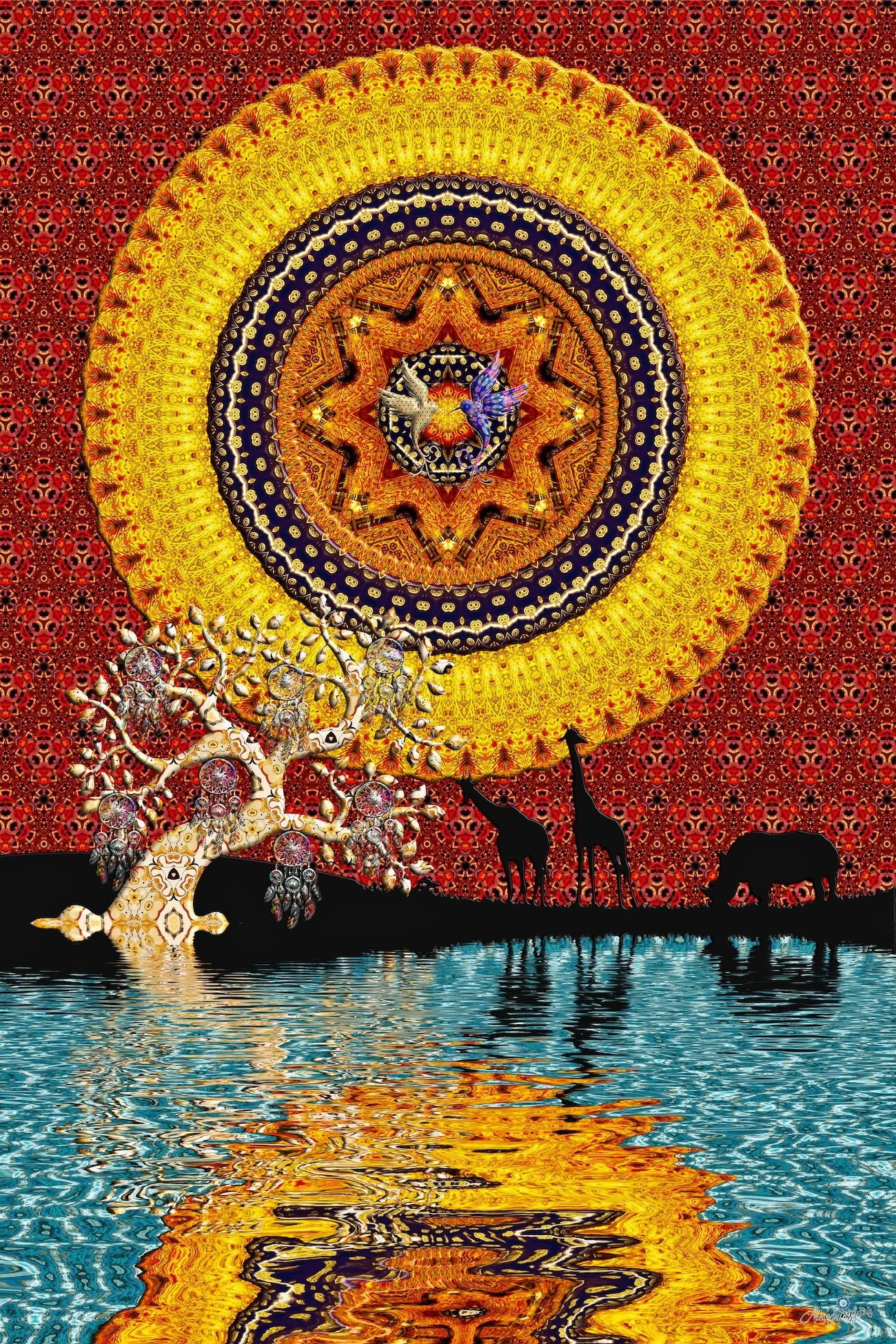As soon as I finished high school I was lucky enough to start working as an artist with Galleries and Museums, in the meantime I studied. All these different studies in various fields gave me a solid culture, then the hand and the desire to transform these cultural experiences into a sign, brought so much flavor and taste to my works. I imagine scenes or facts, I do historical research on some topics or architectural forms. I have tried to convey cultural concepts such as sociology and urban planning in my works.
All in Interview
Interview with Suyapa Quinn
Capturing and conveying emotions through my paintings is central to my artistic practice. My approach to the emotional spectrum is both deliberate and intuitive, aiming to create work that not only represents but also evokes specific feelings.
Interview with Rosarinho Andrade
Arts have always played an important role: music, drawing, embroidery, painting, are examples of artistic engagement throughout her life.
In 2019, at 58 year of age, decides to embrace a dramatic change in her life and studies Interior Design (ID), a lifetime passion, at Cascais School of Arts and Design. Discovers Woven Frames through a colleague and immediately falls in love with it and starts experimenting this Tapestry Technique exploring the different possibilities it offers.
With a passion for Architecture, Geometry and Color she tries to transpose to her frames the learnings acquired during the ID course, for example, how to convey depth or perspective in a 2D setting, which is clearly reflected in her work so far.
Interview with Masha Pozdneacov
Being an artist means forever healing your wounds and at the same time endlessly exposing them. No artist ever sees things as they really are. By creating art, I want to touch people's hearts. I want them to say - she feels deeply, she feels tenderly because art is magical but it's not magic.
Interview with Michael Kaphengst
During my childhood, I often tried to block out my everyday struggles, not wanting my friends to see the pain I was experiencing. This effort to separate my personal turmoil from my interactions with others taught me the importance of resilience and empathy. In my art, I channel these personal experiences into a broader narrative, aiming to evoke a shared emotional response. By transforming my individual pain into a universal language, I hope to connect with others on a deeper level, allowing them to find their own reflections and meanings in my work.
Interview with Hanna Maarit Jauhiainen
I am expressionist, professional contemporary artist Hanna Maarit Jauhiainen from Finland. I paint about what is true and real, I paint about emotions and humanity, about respect for nature and about the deep layers of the soul. My art breathes light and shadow, it invites close to it and asks you to stop. I used to live to paint, now I paint to live; And I mean the deepest meaning of existence in my life.
Interview with Sonia Roseval
My father inspired me. He was a chemical engineer. He had a Laboratory and when I was young I visited on a regular bases and it informed my imagination especially that he drew his formulas from nature to create creams. Recently I had an article in a well known French journal relating to biochemistry about my relationship to my father and my art, that also inspired my journey and finally, studying my peers in the same area did too.
Interview with Tatyana Palcuka-Rikane
Deep and complete knowledge of my profession are proven by long years during which I was learning and improving myself as a professional.
My creative work is first of all characterized by many exhibitions, publications and positive feedback from students, colleagues and art critics.
The basis of everything still remains academic professionalism. Even it is not a leading value in the arts currently – good master of his handcraft should combine talent and professionalism. It is definitely an advantage and provides additional quality to the work results.
My creative work is too long and varied to be described in one page.
Interview with Tomáš Bittner
my transition from traditional woodworking to abstract painting is in complete correspondence with my inner search for myself. Since childhood, I have been afraid to be myself, afraid to have a different opinion than my family, which I grew up with. Self-denial led me to alcohol addiction and in therapies I learned the depths of feelings and experiences. This relieved me of my fear and I felt the need to spread these beautiful self-knowledge further. Abstract painting gave me space to explore and spread the energies that every feeling, every emotion and every one you know.
Interview with Marie-Ghislaine Beaucé
My name is Marie-Ghislaine Beaucé, a French artist currently active in London. Since 2015, I have been creating works of abstract art using luxury textiles and employing various techniques such as weaving and layering strips of fabrics as well as incorporating crochets knitted elements to add varies textures to the pieces.
Interview with Boguslaw Lustyk
My creative process has been guided by two maxims that I learned in school. First is "the multiplicity of reality in art" and the other is "I do not seek I find" that refers to Picasso's statement. Combined with my emotional and open attitude to the world, they give me a wide range of choice and interpretation of topics, means of artistic expression, fascination and creative excitement.
Interview with Carmen Lindahl
It´s interesting and challenging to find new ways of telling a story. For me, I try to express the image I have in mind. Of course sometimes it´s frustrating because it takes a lot of effort and time. But when you get the results you look for it´s also very joyful.
Interview with Vasco Diogo
Working with different media and exploring boundaries between different media requires a lot of research and several years of practice and experimentation. Sometimes you have to focus on a single medium for some time – as I am now doing with electronic music and poetry – to establish theoretical, practical and technical links to other forms of expression you feel more comfortable with. Combining different artistic languages is always putting yourself in a position of fragility and emotional risk, as if you were understanding the whole universe for the first time. That also involves what is now called an aesthetics of failure.
Interview with David Burch
Although I grew up in Edmonton, Alberta I left the province in 1967 at the age of 23 moving to Toronto where I lived until 1995 when I was country a professorship at Columbia University and then lived in NYC until 2007 thus most of my adult life was spent in large urban environments. I only started to paint at the Art Students League of NYC (ASL) in the late 1990s having been given a set of beginner art supplies by an appreciative house guest who was a cousin and a painter having attained a MFA at the University of Alberta, The very instant the brush with oil paint hit the tiny canvas board I was hooked for life. Having said that living in an extremely urban environment influenced in many ways what I chose to paint where my colourfield paintings were just that - colourfield paintings with little reference to abstract landscapes.
Interview with Cher Pruys
Cher Pruys was born in Regina. Over the years she lived in many places including Saskatoon, Calgary, Edmonton, Ottawa, Fort Frances, settling into her present home in Devlin, on the banks of the Rainy River with her husband Mark, 4 dogs and 2 cats. By age three, Cher was seldom found without a drawing tool in hand. She worked in pencil, charcoal and ink over the years, until, she picked up a paintbrush at the age of 35. Beginning with oil paints, she found her chosen mediums in acrylic, water color and gouache. Although self-taught, her dedication and talent have seen her work juried into 626 International exhibits. She has won 969 awards for her work in International Juried Exhibits.
Interview with Olivia-Patricia Terrell O’Neal
Patricia Terrell was raised in Nashville, Tennessee. Attended four universities and received her Master’s Degree at the New York Academy of Art (with honors). Studied and influenced by Lewis Cohen, Martha Erlebacker, Vincent Desiderio, Steven Assael, and Carmen Cereceda. She also traveled through Italy and worked in sculpture at the studio “Cooperative in Pietresanta, Italy.
Interview with Alex Funes
My Mexican heritage has been a fundamental influence on my artistic vision and style, especially in digital art and photography. Growing up in Mexico exposed me to a rich cultural tradition full of vibrant colors, deep symbolism, and a strong connection to spirituality and nature. These influences are evident in my use of color and form, as well as in the themes I explore in my work.
Interview with Zebulun Lund
I am from Nebraska. Themes about homesteading, pioneering, and manifest destiny have been present for as long as I can remember. I think it's curious that all of these structures were made 150, 100, 50, even 15 years ago in the spirit to establish something. There is a sort of rah-rah about these things, aspects both more or less innocent. Now they are being whisked away and returned to nature by herself and in many cases as if they'd never existed. It's really quite spectacular phenomenon. I'm more interested in asking the general question about the specific observation than I am making any statements on Amercian cultural identity and transformations. They certainly exist; I'm simply not smart enough to conceive of or make any comments for my works contributions to these conversations.
Interview with Ana Sahami
One of my primary approaches is to treat typography and graphic elements as complementary rather than dominant forces within the painting. I see them not as separate additions but as woven threads that are part of the fabric of the artwork. For instance, when incorporating text, I often think of it as a texture or a pattern rather than straightforward lettering. I’ll layer it within the painting, allowing it to merge with the background, fade into the colours, or intertwine with other elements. This way, it becomes a subtle whisper rather than a shout, adding depth without stealing focus.
Interview with Ute Bivona
Ute Bivona is an experienced German painter who has exhibited her work nationally and internationally. As a child, she often felt abandoned and alone and fled into the magical world of colors, painting, drawing and reading to feel better. Through her lively abstract compositions, she tries to express her moods, thoughts, fears, hopes, sadness and joy and to take the viewer into her joyful, peaceful and, above all, colorful world.



















